David Suzuki's Blog, page 45
February 9, 2016
It's time for Canada to shift to a green economy
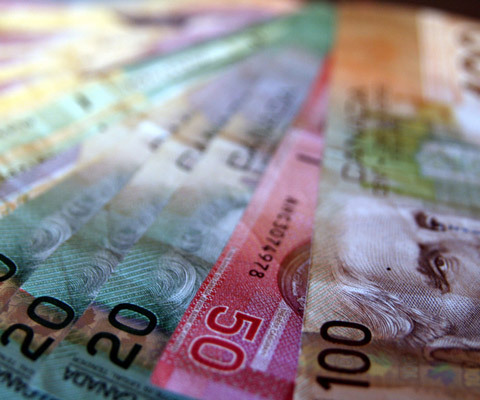
Let's show solidarity all across Canada. Make sure the federal government hears that we believe a smart approach to the economy is clean, green and future-oriented.
Hey! Want more DSF? Join David Suzuki on Facebook

February 4, 2016
Want to eat healthier? Sustainable seafood is a great choice

(Credit: Barry J Brady Photography)
Did you know that ounce for ounce, salmon delivers more omega-3 fatty acids than most types of fish?
Health Canada recommends eating fish -- especially oily fish such as char, herring, mackerel, salmon, sardines and trout -- at least twice a week for its heart-protective benefits. Many of these fish are also good choices from a sustainability perspective, according to SeaChoice.
Omega-3 fatty acids can be destroyed by excessive heat when cooking. Baking, broiling, steaming and poaching is the best way to keep them. Smoked salmon is smoked at a low temperature and is usually higher in omega-3 fatty acids than cooked salmon.
Other oily fish that are in the most sustainable "green" category include: Arctic char, Atlantic mackerel, Pacific sardine and some species of farmed trout.
The revamped WildSalmonRecipes.com website highlights wild salmon recipes from some of the West Coast's most celebrated chefs.
Add some colour to your repertoire with three pepper wild salmon loaf. Add some spice by trying out chili grilled salmon with mango salsa.
Hey! Want more DSF? Join David Suzuki on Facebook

February 3, 2016
Solar: A brilliant way to get energy
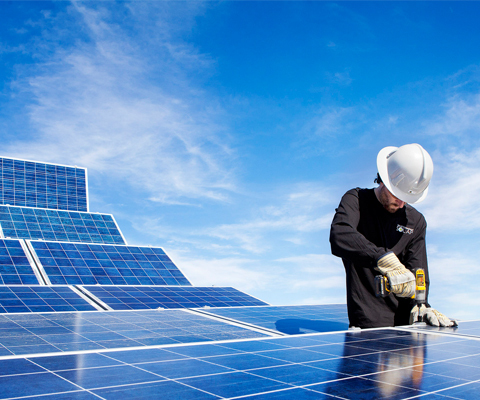
(Credit: NAIT via Flickr)
Except for nuclear and geothermal, all energy we use comes from the sun in one form or another. As sunlight reaches the Earth's surface, it powers heat transfers that move air and ocean currents, used for wind and tidal power. The sun evaporates water, contributing to the hydrologic cycle that fills reservoirs for hydroelectricity.
Even fossil fuels -- coal, oil and gas -- are forms of solar energy, created when, hundreds of millions of years ago, plants absorbed and converted sunlight through photosynthesis, then retained that energy when they died, decayed and became compacted and buried deep in the Earth, along with the animals that ate them. Wood, peat, dung and other plant-based fuels are a less concentrated form.
Most people think of solar energy in its direct form, harnessed in a variety of ways from the sun's rays as they hit Earth. Technologies range from windows and water tanks placed strategically to make use of the sun's energy, to photovoltaic cells (or solar panels), to large mirrors that concentrate solar heat to boil water and drive turbines.
Unlike fossil fuels, or uranium-dependent nuclear power, the energy source is free, inexhaustible and non-polluting, with no troublesome byproducts like radioisotopes or carbon dioxide. It can be used for a variety of applications, from providing power for a single streetlight to generating electricity for a home to keeping satellites and factories going.
Solar also has disadvantages. Without energy-storage systems, it only works when the sun shines, and it can be costly. Solar installations to provide power for large areas can take up a lot of space, and some technologies rely on rare materials that must be mined, with environmental consequences.
Because of rapid technological advances, falling prices and the many advantages of solar power, it's become one of the fastest-growing sources of renewable energy worldwide, with installed capacity growing on average 43 per cent a year since 2000, according to the World Economic Forum. Still, as an MIT reports points out, solar was only generating about one per cent of global electricity in 2015. With costs dropping by about 10 per cent a year, and technologies for harnessing and storing the sun's energy improving, that could climb to 20 per cent by 2027, an Oxford University study found.
About 90 per cent of currently installed solar capacity uses crystalline silicon wafer-based photovoltaic cells. As Phys.org notes, they're non-toxic, abundant and reliable, but the wafers are thick and rigid and somewhat expensive to manufacture. Many newer-technology cells are smaller, less rigid and often more affordable, but they can come with other problems. Some use materials that "involve rare and/or toxic metals."
The website notes that promising "third generation" developments include "thin-film solar photovoltaic employing dye-sensitized, organic, quantum dot or perovskite solar cells and novel combinations of semiconductor materials, as well as concentrators." Technology is also being developed to mimic photosynthesis, converting sunlight to electrons with nanotechnology and light-absorbing compounds and delivering the electrical energy "to customized catalysts that convert water and CO2 into oxygen and chemical fuels." Artificial photosynthesis is also being studied as a way to capture and convert CO2 emissions to generate fuels, plastics, drugs and other products!
Solar cell placement raises interesting possibilities as well, including paving roads, parking lots and bike lanes with durable panels that not only generate power but also melt ice and snow. Some experts predict solar technology could make the need for baseload power and even transmission grids obsolete. As Steve Holliday, CEO of National Grid, which operates gas and power transmission networks in the U.K. and northeastern U.S., said, "From a consumer's point of view, baseload is what I am producing myself. The solar on my rooftop, my heat pump -- that's the baseload."
Solar is viable and affordable enough (especially with tax credits in jurisdictions including the U.S.) that it can be easily installed on rooftops to generate electricity for homes, public institutions and businesses. It's becoming an increasingly important part of the energy mix, especially as transmission-grid and storage-system technologies become more sophisticated and efficient.
Every hour, the sun bathes the Earth with enough energy to supply our needs for more than a year. There's no reason we can't harness more of it to cut back on polluting, climate-altering fossil fuels.
ASK FOR A SHIFT TO CLEAN ENERGY IN THE 2016/17 FEDERAL BUDGET
Hey! Want more DSF? Join David Suzuki on Facebook

February 1, 2016
Great Bear Rainforest agreement applauded for honouring First Nations rights, protecting ancient forest watersheds and committing to conservation-based forest management
The David Suzuki Foundation applauds the B.C. government and Coastal First Nations' final ratification of the Great Bear Rainforest agreement for its recognition of aboriginal rights to shared decision-making and its commitment to strict conservation measures in the Great Bear Rainforest, the largest intact temperate rainforest on the planet.
With 26 government-to-government agreements with resident First Nations, and collaboration with environmental groups and industry, the agreement ratifies a progressive approach to conservation and economic development in the region's ancient forests and pristine watersheds. We applaud the agreement for supporting restrictive logging rules and ensuring that most of the high biodiversity zones and 85 per cent of the forested landscape will be protected. The region will now be co-managed with First Nations who will benefit from improved economic and conservation opportunities.
The Foundation, led by co-founder Tara Cullis, began working on community economic development opportunities with First Nations communities on the coast more than 18 years ago.
Premier Clark has committed to ending the commercial grizzly hunt in the Great Bear Rainforest. We urge the premier to work with local First Nations to ensure that such protections are established in law.
The agreement opens the door to implement marine plans recently negotiated by the B.C. government with First Nations, and to pursue new measures to protect grizzlies, black bears and wolves facing mounting pressure from trophy and other forms of hunting.
Media Contact
Theresa Beer
Phone: 778-874-3396
About the David Suzuki Foundation
The David Suzuki Foundation collaborates with Canadians from all walks of life, including government and business, to conserve our environment and find solutions that will create a sustainable Canada through science-based research, education and policy work. Its mission is to protect the diversity of nature and our quality of life, now and for the future. Its vision is that, within a generation, Canadians will act on the understanding that we are all interconnected and interdependent with nature.
Hey! Want more DSF? Join David Suzuki on Facebook

January 31, 2016
Secrets to homemade hair care revealed

Choose a natural conditioner that has the same pH as your body's acid mantle (pH 4 to 6), like an apple cider vinegar rinse. (Credit: Lindsay Coulter)
My store-bought shampoo contained Dirty Dozen ingredients, so I tried making my own and using less.
My attempts to avoid hormone-disrupting and cancer-causing ingredients AND protect fish and other wildlife from harmful toxics did a lot for my sanity... but not much for my hair.
What was I missing?
I quizzed shampoo-maker Bonnie of Zero Xeno (@Zero_Xeno).
Why worry about pH?
Hair care requires both alkaline (slightly higher pH) and acidic (lower pH) treatment. Formulating shampoo and conditioner is about balance. Hair needs to be cleaned without stripping its natural oils and acid mantle.
What's the acid mantle?
It's your natural protective layer -- mainly sebum (an oily, water-resistant substance produced by sebaceous glands in your skin) and sweat (produced by apocrine sweat glands). On your head, these acidic substances protect your scalp and hair from outside elements and pollutants.
Each strand of hair grows from an individual follicle and is naturally coated with sebum. Eventually the sebum causes the strands to stick together, making locks look dull and greasy. Pollution, dust and pollen are attracted and cling to sebum. Uncleansed, follicles become plugged, forming tiny bumps or pimple-like sores.
The pH story
The outermost part of each hair strand is comprised of multiple cuticles. These overlapping, scale-like cells protect and strengthen the hair shaft. Shampoos made of natural saponified castile soap and safe surfactants with an alkaline pH of 8 to 9 safely and effectively lift and open these cuticle layers, removing sebum, oil and dirt trapped beneath.
Many people use baking soda (pH 9) to clean hai. But products with a pH higher than 10 are too alkaline and can strip the hair and scalp completely of its natural oils and acid mantle. Some find baking soda too harsh or not ideal for frequent use.
How does apple cider vinegar rinse work?
If cuticles are not closed, the hair shaft can become damaged or broken when combing or styling. Choose a natural conditioner that has the same pH as your body's acid mantle (pH 4 to 6).
Many people achieve this result rinsing with apple cider vinegar (pH 4). Avoid products with a pH lower than 4 -- they're too acidic and can burn your scalp and dry out your hair.
How to test for pH
Purchase pH test strips from a health food store. They're not highly accurate, but they'll give you a pH range of store-bought, Dirty Dozen-free products or homemade recipes. You can also contact a company and ask for their pH info.
Once you kicked hair care products with the Dirty Dozen to the curb, have you been able to maintain the same results? Share your secret in the comments and be entered to win a tube of shampoo and conditioner donated by Zero Xeno (draw date: February 15, 2016).
Sincerely,
Lindsay Coulter, a fellow Queen of Green
Hey! Want more DSF? Join David Suzuki on Facebook

January 28, 2016
Paris changed everything, so why are we still talking pipelines?
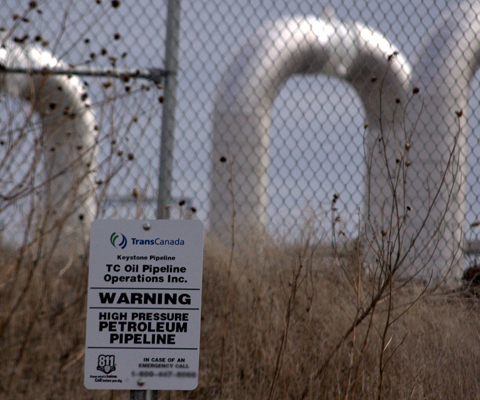
(Credit: Shannon Ramos via Flickr)
With the December Paris climate agreement, leaders and experts from around the world showed they overwhelmingly accept that human-caused climate change is real and, because the world has continued to increase fossil fuel use, the need to curb and reduce emissions is urgent.
In light of this, I don't get the current brouhaha over Kinder Morgan, Keystone XL, Northern Gateway or the Energy East pipelines. Why are politicians contemplating spending billions on pipelines when the Paris commitment means 75 to 80 per cent of known fossil fuel deposits must be left in the ground?
Didn't our prime minister, with provincial and territorial premiers, mayors and representatives from non-profit organizations, parade before the media to announce Canada now takes climate change seriously? I joined millions of Canadians who felt an oppressive weight had lifted and cheered mightily to hear that our country committed to keeping emissions at levels that would ensure the world doesn't heat by more than 1.5 C by the end of this century. With the global average temperature already one degree higher than pre-industrial levels, a half a degree more leaves no room for business as usual.
The former government's drive to make Canada a petro superpower distorted the Canadian economy into greater fossil fuel dependence, with catastrophic consequences when the price of oil collapsed. The lesson should have been learned long ago: Heavy dependence on a single revenue stream like fish, trees, wheat, minerals or even one factory or industry is hazardous if that source suffers a reversal in fortune like resource depletion, unanticipated cost fluctuations or stiff competition.
Coal stocks have already sunk to the floor, so why is there talk of building or expanding coal terminals? Low oil prices have pushed oilsands bitumen toward unprofitability, so why the discussion of expanding this carbon-intensive industry? Fracking is unbelievably unsustainable because of the immense amounts of water used in the process, seismic destabilization and escape of hyper-warming methane from wells. Exploration for new oil deposits -- especially in hazardous areas like the deep ocean, the Arctic and the Arctic National Wildlife Refuge and other critical wildlife habitat -- should stop immediately.
Pipeline arguments are especially discouraging, with people claiming Quebec is working against the interests of Alberta and Canada because the leadership of the Montreal Metropolitan Community -- representing 82 municipalities and nearly half the province's population -- voted overwhelmingly to reject the proposed Energy East pipeline project, which would carry 1.1 million barrels of oilsands bitumen and other oil products from Alberta to refineries and ports in the east. Some have thrown out the anti-democratic and, frankly, anti-Canadian notion that because Quebec has received equalization payments it should shut up about pipeline projects.
National unity is about steering Canada onto a sustainable track and looking out for the interests of all Canadians. Continuing to build fossil fuel infrastructure and locking ourselves into a future of increasing global warming isn't the way to go about it. Shifting to a 21st century clean-energy economy would create more jobs, unity and prosperity -- across Canada and not just in one region -- than continuing to rely on a polluting, climate-altering sunset industry. Leaders in Quebec should be commended for taking a strong stand for the environment and climate -- and for all of Canada.
The Paris target means we have to rethink everything. Energy is at the heart of modern society, but we have to get off fossil fuels. Should we expand airports when aircraft are the most energy-intensive ways to travel? Why build massive bridges and tunnels when we must transport goods and people differently? The global system in which food travels thousands of kilometres from where it's grown to where it's consumed makes no sense in a carbon-constrained world. Agriculture must become more local, so the Peace Valley must serve as the breadbasket of the North rather than a flooded area behind a dam.
The urgency of the need for change demands that we rethink our entire energy potential and the way we live. It makes no sense to continue acting as if we've got all the time in the world to get off the path that created the crisis in the first place. That's the challenge, and for our politicians, it's a huge task as well as a great opportunity.
Hey! Want more DSF? Join David Suzuki on Facebook

SciStarter adds first Canadian organization as a citizen science partner
The David Suzuki Foundation expands citizen science projects to include Canadians
The David Suzuki Foundation is teaming up with SciStarter to encourage science researchers in Canada to engage more citizen science partners through SciStarter's North America-wide database and international reach.
"Global collaboration on scientific research on the environment is crucial," said Darlene Cavalier, founder of SciStarter and professor of practice at Arizona State University. "We're thrilled to see growing involvement from the international scientific community, particularly from the David Suzuki Foundation, which works to conserve the environment and find solutions to some of Canada's most pressing environmental concerns."
"SciStarter will help us promote the concept of citizen science in Canada," said Scott Wallace, senior research scientist at the David Suzuki Foundation. "This hub of international science activity will make it easier to engage volunteers, track new projects and strengthen the value of citizen science with broader audiences." The Foundation's work includes a focus on ocean health, climate and energy, environmental rights and getting children into nature, all of which benefit from greater public engagement in science.
A citizen science project can involve one person or millions of people collaborating for a common goal. SciStarter's website connects scientists and community leaders to more than 1,100 citizen science projects and anyone wishing to contribute to science research.
What scientists and citizen scientists need to know
Scientists from around the world can add their research to SciStarter's Project Finder to be accessed by a network of project supporters and participants. Members can update projects in the same location.
Citizen scientists can identify research projects they'd like to participate in by searching the Project Finder based on type of activity, scientific topic, location and more. The website will soon include GIS functions to make it easier to find projects in a local community.
SciStarter programs are already shared in the U.S. with Serve.gov, a clearinghouse of national volunteer opportunities managed by the Corporation for National and Community Service and internationally through the United Nations Environment Programme's citizen science portal. UNEP considers SciStarter a valuable resource for sharing knowledge around the world to promote innovation and encourage scientific enquiry about the environment and other topics.
Media Contacts
Darlene Cavalier
Phone: 267-253-1310
Email: Darlene@SciStarter.com
Scott Wallace
Phone: 778-558-3984
Email: swallace@davidsuzuki.org
About SciStarter
SciStarter aims to enable people to contribute to science through informal recreational activities and formal research efforts. The website creates a shared space where scientists can connect with people interested in working on or learning about joint research projects. SciStarter features 1,100 searchable citizen science projects and recruits participants through partnerships with Discover Magazine and Astronomy Magazine, PBS Kids, the National Science Teachers Association, Public Library of Science, WHYY/NPR, Pop Warner Youth Scholars, and more.
About the David Suzuki Foundation
The David Suzuki Foundation collaborates with Canadians from all walks of life, including government and business, to conserve our environment and find solutions that will create a sustainable Canada through science-based research, education and policy work. Its mission is to protect the diversity of nature and our quality of life, now and for the future. Its vision is that, within a generation, Canadians will act on the understanding that we are all interconnected and interdependent with nature.
Hey! Want more DSF? Join David Suzuki on Facebook

January 27, 2016
The money-saving food tip no one is talking about
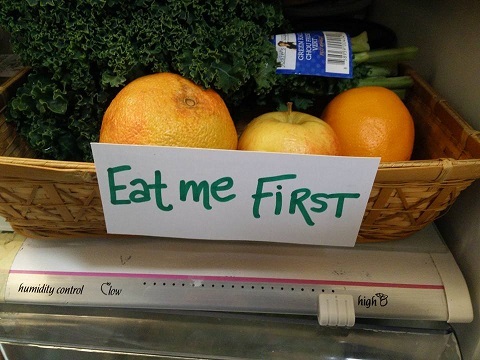
Add sad-looking produce and foods approaching their "best before" dates to your "eat-me-first" bin.
January, 2016 will go down as the "great Canadian cauliflower crisis" due to the cascading Canadian dollar, tumbling oil prices and California's drought.
Maybe you're immune to the hysteria because:
You prefer local, seasonal produce
Your household is already saving about $1,500 per year by not wasting food
You willingly pay higher prices for organic, local and fair trade
High food prices are likely here to stay. In fact, Canadians should expect to spend $345 more this year on food. Where will that extra dough come from?
A hard-core solution: join the Bathurst family of New Brunswick -- start homesteading. (They're so brave!)
A soft-core solution: Create an "Eat-me-first" bin or basket for the fridge.
I can't take credit for the "eat-me-first" bin featured in my Queen of Green Coaches video. I discovered this brilliant yet simple tip by watching Jen and Grant of the Just Eat It movie. They ate only rescued, discarded and surplus food for six months, spending $200 in that time yet acquiring $20,000 of food in their house -- $13,000 of which was fair trade AND organic chocolate. (These are smart people! Let's be more like Jen and Grant.)
Step 1: Find a bin or basket
Repurpose a plastic bin or basket
Step 2: Label it
In bold letters write, "Eat-me-first"
Step 3: Add food
Choose sad-looking produce and foods approaching their "
What other tips do you have to eat what you buy?
Sincerely,
Lindsay Coulter, a fellow Queen of Green
Hey! Want more DSF? Join David Suzuki on Facebook

January 21, 2016
Environmental rights are human rights
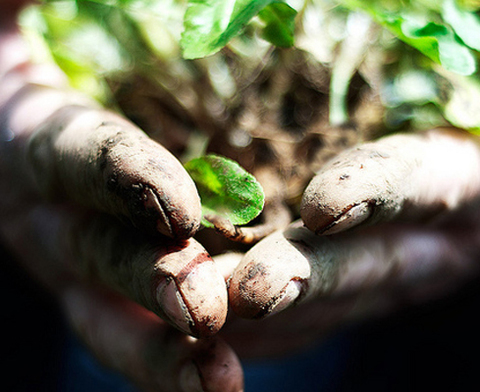
(Credit: Allesandro Musicorio via Flickr)
My grandparents came here from Japan at the beginning of the 20th century. Although it would be a one-way trip, the perilous journey across the Pacific was worth the risk. They left behind extreme poverty for a wealth of opportunity.
But Canada was different then, a racist country built on policies of colonization, assimilation and extermination of the land's original peoples. My grandparents and Canadian-born parents, like indigenous people and others of "colour", couldn't vote, buy property in many places or enter most professions. During the Second World War, my parents, sisters and I were deprived of rights and property and incarcerated in the B.C. Interior, even though Canada was the only home we'd ever known.
A lot has changed since my grandparents arrived, and since I was born in 1936. Women were not considered "persons" with full democratic rights until 1929. People of African or Asian descent, including those born and raised here, couldn't vote until 1948, and indigenous people didn't get to vote until 1960. Homosexuality was illegal until 1969!
In 1960, John Diefenbaker's Progressive Conservative government enacted Canada's Bill of Rights, and in 1982, Pierre Trudeau's Liberals brought us the Charter of Rights and Freedoms, with equality rights strengthened in 1985.
We should celebrate those hard-won rights. I'm happy to have witnessed much of the progress my country has made. But there's room for improvement. And in some ways Canada has gone backward.
When I was a boy, we drank water from lakes and streams without a thought. I never imagined that one day we would buy water in bottles for more than we pay for gasoline. Canada has more fresh water per capita than any nation, but many indigenous communities don't have access to clean drinking water.
When I was growing up in Vancouver, Dad would take me fishing for halibut off Spanish Banks, sturgeon on the Fraser River and salmon in English Bay. Today I can't take my grandchildren fishing in those places because the fish are gone.
As a boy, I never heard of asthma. Today, childhood asthma is as common as red hair. And half of all Canadians live in places with unacceptable air pollution.
I also remember when all food was organic. I never thought we'd have to pay more not to have chemicals in our food. Today we can't avoid the toxic consequences of our industrial and agricultural activities. We all have dozens of toxic pollutants incorporated into our bodies.
We may think the highest rate of deforestation is in the Amazon but in 2014 Canada became the world leader in loss of pristine forests.
Surely, in a nation with so much natural wealth, we should expect better appreciation, treatment and protection of the air, water, soil and rich biological diversity that our health, prosperity and happiness depend on.
The right to live in a healthy environment is recognized by more than 110 nations -- but not Canada. That inspired the David Suzuki Foundation and Ecojustice to launch the Blue Dot movement a little over a year ago.
It's exceeded our expectations, with more than 100 municipalities passing environmental rights declarations and a number of provinces considering or committing to the idea. The next step is to take it to the federal level, by calling for an environmental bill of rights and, ultimately, an amendment to the Charter of Rights and Freedoms.
The environmental rights campaign is also about human rights and social justice -- something recognized by the United Nations, which has appointed a special rapporteur on human rights and the environment. A country and its values are measured not by the number of extremely wealthy people but by the state of its poorest and most vulnerable. Many environmental problems are tied to societal inequities -- hunger and poverty, chronic unemployment, absence of social services, inadequate public transit and often conflicting priorities of corporations and the public interest -- as people at the lower end of the socioeconomic scale are disproportionately affected by environmental hazards and toxic pollution.
Canada has come a long way, but we can't be complacent. We must work to maintain and strengthen the rights of all Canadians, to build an even better Canada. That means giving all Canadians the right to a healthy environment.
Hey! Want more DSF? Join David Suzuki on Facebook

January 18, 2016
What is the Queen of Green Coaches initiative?
In 2012, I "greened" The Smiths.
Not only was it successful -- they composted, cooked more vegetarian meals, made their own home cleaners, rid their home of the Dirty Dozen, planted trees, etc. -- it felt good!
So I designed a distributed leadership initiative to share that good feeling and support more Canadians to embrace small steps (and so I don't have to go house to house). I had a hunch there were many Queens of Green out there from coast to coast to coast!
My hunch was right.
Four years later, 130 Queen of Green Coaches have learned about trust theory, self-compassion, personal ecology, how do deal with apathy AND helped some 700 families find out things like where to get a rain barrel in their cities.
But those are only numbers, which never tell the whole story.
Please watch this video (co-created with some talented volunteers, including Andrew Williamson @offislandmedia) about what it means to work on something that aligns with your values!
Do you think you have what it takes to be a Queen of Green Coach?
Subscribe to my monthly digest to learn about the next call out for applications (likely summer 2016).
Sincerely, Lindsay Coulter
A fellow Queen of Green
Hey! Want more DSF? Join David Suzuki on Facebook

David Suzuki's Blog
- David Suzuki's profile
- 247 followers



